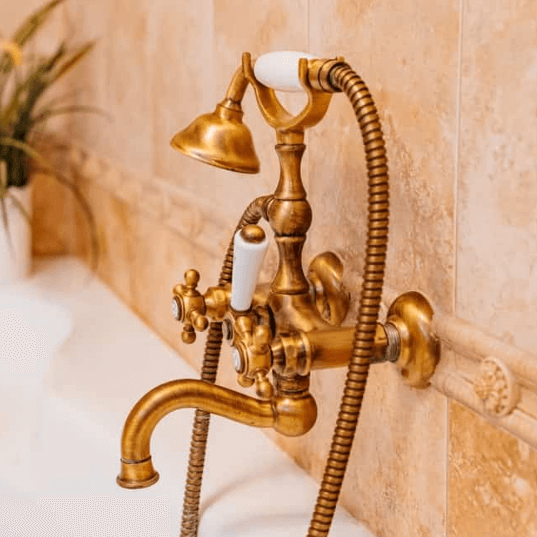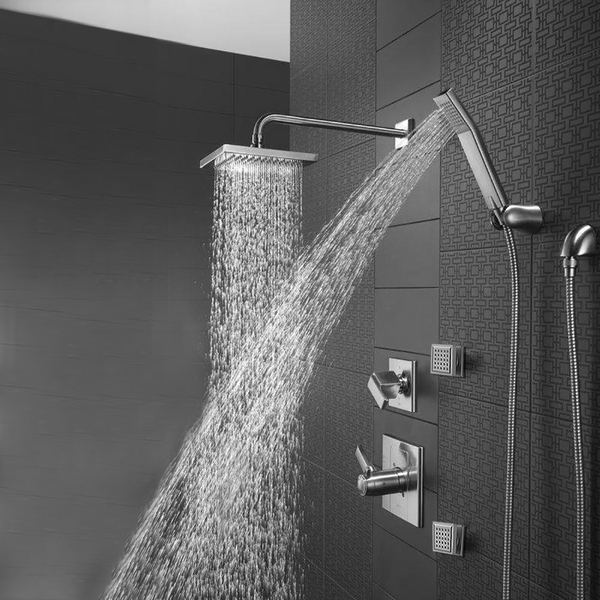Faucet Material Durability: Which One Lasts Longest?
When choosing a faucet for your kitchen or bathroom, one of the most important considerations is durability. Faucets are an essential part of everyday life, and selecting the right material ensures they remain functional and aesthetically pleasing for years. With a variety of materials available, it can be challenging to determine which one will withstand the test of time. This article will guide you on Faucet Material Durability: Which One Lasts Longest? through the most common faucet materials and their durability, helping you make an informed decision.
Brass Faucets
Brass is one of the most popular materials for faucets due to its excellent durability and corrosion resistance. Made from a mixture of copper and zinc, brass faucets are known for their robust structure and long lifespan.
Advantages:
- Corrosion Resistance: Brass is naturally resistant to rust and corrosion, making it ideal for areas with hard water.
- Longevity: With proper maintenance, brass faucets can last several decades.
- Antibacterial Properties: The copper content in brass has natural antimicrobial qualities, reducing the buildup of bacteria.
- Aesthetic Appeal: Brass faucets are often available in polished, brushed, or antique finishes, offering versatile design options.
Drawbacks:
- Brass faucets are generally more expensive than other materials.
- They require regular cleaning to maintain their shine.
- Over time, mineral deposits from hard water can dull their finish without routine care.
Stainless Steel Faucets
Stainless steel is another durable and reliable choice for faucets. It is a popular option for modern and industrial-style kitchens and bathrooms.
Advantages:
- High Durability: Stainless steel is resistant to scratches, dents, and stains.
- Corrosion Resistance: It performs well in humid environments, preventing rust and tarnishing.
- Easy Maintenance: Stainless steel faucets are easy to clean and do not require special care.
- Eco-Friendly: Many stainless steel faucets are recyclable, making them a sustainable choice.
Drawbacks:
- Fingerprints and water spots are more noticeable on stainless steel finishes.
- They can be heavier compared to other materials, requiring sturdier installation.
- High-end stainless steel faucets can be costly.
Zinc Faucets
Zinc is a cost-effective alternative to brass and stainless steel. It is commonly used in budget-friendly faucets or as a core material with a plated finish.
Advantages:
- Affordable: Zinc faucets are typically more affordable than brass or stainless steel options.
- Lightweight: Easy to handle and install.
- Corrosion Resistance: Zinc alloys often include protective coatings to resist rust.
Drawbacks:
- Lower Durability: Zinc is less durable and more prone to corrosion over time, especially in areas with hard water.
- Shorter Lifespan: Zinc faucets may need to be replaced sooner than those made from brass or stainless steel.
- Less Premium Appearance: Zinc lacks the high-end feel of other materials.
Plastic Faucets
Plastic faucets are commonly found in low-cost applications and temporary setups. While not as durable as metal faucets, they have some advantages.
Advantages:
- Budget-Friendly: Plastic faucets are the most affordable option.
- Lightweight: Easy to install and move.
- Resistant to Rust: Plastic does not corrode, making it suitable for areas with high moisture levels.
Drawbacks:
- Low Durability: Plastic is prone to cracking and wear over time, especially with heavy use.
- Limited Aesthetic Appeal: Plastic faucets often lack the premium look of metal options.
- Short Lifespan: They may need frequent replacement in high-use areas, adding to long-term costs.
Bronze Faucets
Bronze faucets, particularly those with oil-rubbed or brushed finishes, are a popular choice for traditional or rustic decor. They add a touch of elegance to any bathroom or kitchen.
Advantages:
- Corrosion Resistance: Bronze is resistant to rust, making it ideal for long-term use.
- Aesthetic Value: The rich, dark tones of bronze provide a unique and luxurious appearance.
- Low Maintenance: Bronze finishes typically do not show water spots or fingerprints.
Drawbacks:
- Cost: Bronze faucets can be more expensive than other materials.
- Vulnerability to Scratches: The finish can be scratched, exposing the lighter material underneath.
- Special Care Required: To preserve their finish, avoid abrasive cleaners.
Copper Faucets
Copper faucets are known for their distinctive reddish hue and natural aging process. Over time, they develop a patina that many homeowners find appealing.
Advantages:
- Antimicrobial Properties: Copper’s natural properties reduce bacteria and germs.
- Unique Aesthetic: The patina that forms adds character and charm.
- Corrosion Resistance: Copper is resistant to rust and can handle humid environments well.
Drawbacks:
- Maintenance: Copper requires regular polishing to prevent tarnishing if you prefer the original shine.
- High Cost: Copper faucets are among the most expensive options.
- Susceptible to Staining: Exposure to certain chemicals can leave marks.
Nickel Faucets
Nickel faucets, particularly those with a brushed or satin finish, are a common choice for contemporary designs. They offer a subtle shine and are less reflective than chrome.
Advantages:
- Durability: Nickel is resistant to scratches and wear.
- Versatile Design: It blends well with various decor styles.
- Easy Maintenance: Brushed finishes hide fingerprints and water spots better than polished ones.
Drawbacks:
- Cost: Nickel faucets can be more expensive than stainless steel.
- Potential for Corrosion: Without a proper protective coating, nickel can corrode over time.
- Prone to Water Spots: Despite its durability, water spots can accumulate without regular cleaning.
Chrome Faucets
Chrome faucets are a popular choice due to their affordability and sleek appearance. They are widely available in various styles and designs.
Advantages:
- Affordability: Chrome is one of the most budget-friendly materials.
- Reflective Finish: The shiny surface adds a modern touch.
- Ease of Cleaning: Chrome is easy to clean with mild soap and water.
Drawbacks:
- Vulnerability to Scratches: The reflective finish can show scratches and smudges.
- Lower Corrosion Resistance: Chrome is less resistant to rust compared to stainless steel or brass.
- Frequent Maintenance Needed: To maintain its luster, frequent cleaning is necessary.
Factors Influencing Faucet Durability
Beyond the material itself, several factors contribute to the overall durability of a faucet:
- Water Quality: Hard water can lead to mineral buildup, causing corrosion and reducing the lifespan of certain materials.
- Usage Frequency: High-use faucets, such as those in kitchens, are more prone to wear and tear.
- Maintenance: Regular cleaning and proper care can significantly extend the life of a faucet, regardless of material.
- Installation Quality: A poorly installed faucet is more likely to experience leaks and damage over time.
- Protective Coatings: Materials with high-quality finishes or protective layers often last longer.
Conclusion
Choosing the right faucet material depends on your priorities, such as durability, budget, and design preferences. For maximum longevity and performance, brass and stainless steel are top choices. Bronze and copper faucets offer unique aesthetics and are highly durable but may require more maintenance. If you’re on a budget, chrome or zinc can be suitable options, though they may not last as long.
Ultimately, investing in a high-quality faucet made from durable materials can save you money and hassle in the long run. Consider the specific needs of your space and the level of use the faucet will endure to make the best choice. With the right care and maintenance, your faucet can remain a functional and beautiful part of your home for years to come.



